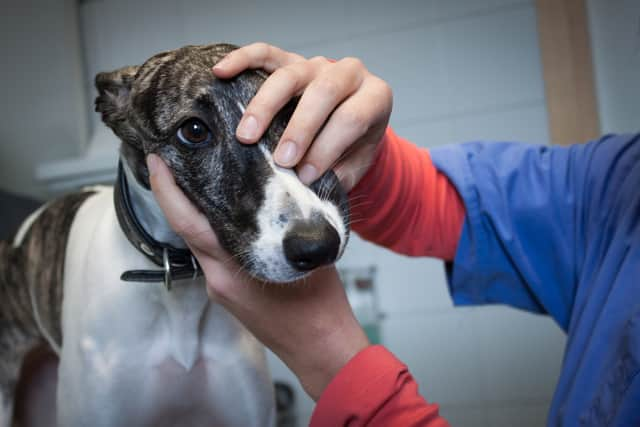It's still not know exactly what causes Alabama rot in dogs, but cases tend to spike in the spring
By Amber Allott
Published 21st Feb 2024,
There have already been 10 confirmed cases of a rare but potentially fatal dog disease in the UK this year, with experts still not entirely sure what causes it.
Alabama rot, also known as cutaneous and renal glomerular vasculopathy (CRGV), is a disease which affects dogs. It damages blood vessels which initially causes visible sores on the skin, but can eventually lead to organ dysfunction and ultimately kidney failure - with very few dogs surviving once it reaches this stage.
The disease, which has been documented in both the UK and the US, is considered rare, but the RSPCA warns cases tend to spike during winter and spring. With spring just around the corner, dog experts at the Kennel Store have shared some information on symptoms dog owners need to be on the lookout for - as well as how you can protect your pup with so little still known about the disease.
Here's everything you need to know:

The disease was initially thought to only affect greyhounds (Photo: Adobe Stock)
The cause of Alabama rot is still unknown, although research is ongoing. Most reports come from dog owners who walk their dogs in the countryside, and most cases are reported during winter and spring. Cases are generally less common in the summer months compared to the winter months.
The first case was reported in America, in the 1980s and at first it was thought to only affect greyhounds. However, it is now understood to affect dogs of all breeds, ages and sizes.
Despite the exact cause remaining a mystery, some researchers believe it may be linked to mud exposure in some way. The Kennel Store's advice is to make sure you wash all mud off of your dog after wet and muddy walks, especially if you’ve gone through any woodland areas.
What are the symptoms of Alabama rot?
The earliest symptoms tend to be skin ulcers that appear on the dog's legs or paws. These marks look like a small red area, but may also present as a bruise, sting, or open sore. Dogs infected with the disease may also develop ulcers on the muzzle, tongue, head, flank and belly - although the RSPCA notes most skin lesions on dogs are caused by something else.
If the disease progresses and the kidneys are affected, signs something is wrong may include changes in appetite - such as a reduced appetite, excessive drinking, vomiting, and lethargy. You should seek vet care if you notice any of these symptoms.
Read More
 Swine flu: first human case of flu strain H1N2 found in the UK, says UKHSA
Swine flu: first human case of flu strain H1N2 found in the UK, says UKHSA Alaskapox virus: symptoms, did case come from a cat, how is it spread, is it fatal - will it come to the UK?
Alaskapox virus: symptoms, did case come from a cat, how is it spread, is it fatal - will it come to the UK? First human plague case in eight years recorded in United States - symptoms explained
First human plague case in eight years recorded in United States - symptoms explainedCan it be treated?
With the underlying cause of Alabama rot still unknown, there is no specific treatment, Kennel Store experts say. "If your dog is showing symptoms of Alabama rot, it is vital your dog is taken to the vets promptly, so a plan can be decided and treatment can begin," a spokesperson says.
The People's Dispensary for Sick Animals (PDSA) also says the disease can be diagnosed by blood or urine tests, although sometimes skin or kidney biopsies may be needed. For less severe stages of the disease, skin wounds can be treated with pain relief, antibiotics for any infections, and potentially a cone if the dog won't leave its lesions alone. Dogs at this stage usually make a full recovery.
However, if the disease starts to affect your dog’s kidneys, they will likely need intensive care, involving a hospital stay and a fluid drip. PDSA says the prognosis at this point is unfortunately worse.
No comments:
Post a Comment